Learn
Hair
Hair as Evidence
Like fibers, hair can be used to connect a suspect to a victim or crime scene. Because hair may originate from the victim or suspect themselves and was once connected to their blood supply, hair can give us even more information than fibers.
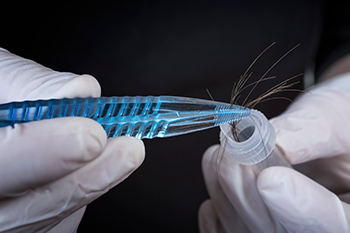
What Can Hair Tell Us?
Hair samples can be used to determine:
- The species of origin (human or animal)
- Where the hair came from (If human, one can determine if the hair was from an arm, head, or pubic region)
- Whether the hair was forcibly removed
- If the hair has been chemically treated
- If the person has ingested toxic substances such as illegal drugs or poisons
- A DNA fingerprint if the root is intact
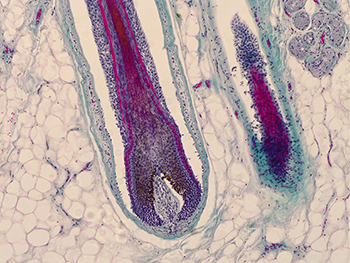
Hair Structure
Hair is made up of a protein known as keratin; it is the same protein that fingernails are made of.
- Hair grows from the papilla which is a large structure at the base of the hair follicle.
- The papilla is made up mainly of connective tissue and a capillary loop.
- It is responsible for connecting the hair to the body's blood supply and nutrients via the capillary loop.
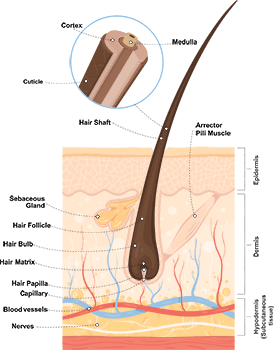
Hair Testing
Because the blood supply is connected to the hair, forensic scientist can tell if someone has ingested drugs or poisons through examining their hair. Some substances remain in the hair for months (~90 days) after the last use or exposure.
Knowledge Check #1
True or False: Hair samples can reveal if a person ingested illegal substances last month.
- True
- False
Answer: a. True
Hair Shaft and Evidence Type
The portion of hair that is found at the scene of most crimes is the hair shaft. Occasionally the root will also be attached. The hair shaft (main part of the hair) is considered class evidence but if the root is intact and DNA can be collected then it is individual evidence. Because most hair collected is class evidence, it is not possible to prove that it came from a particular person. However, with careful observation and analysis, hair evidence can support other convicting evidence to build a case against a suspect.
A single human's hairs may differ in color, texture and structure depending on the location from which they were collected. To compare samples found at the scene to the suspect, at least 10-12 sample hairs are collected from various locations on the suspect's body.
Knowledge Check #2
Hair collected at a crime scene without the root attached is ________blank.
- class evidence
- individual evidence
Answer: a. class evidence
Parts of the Hair Shaft
There are three basic regions of the hair shaft: the cuticle, cortex, and medulla. Each of these regions has unique structures that can assist investigators in identifying which species the hair came from as well as other characteristics.
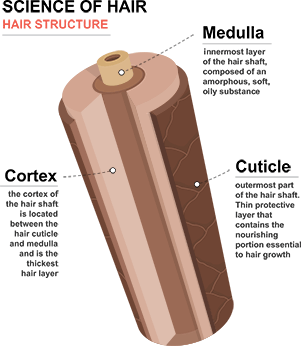
Each of these areas are highlighted in the images below:
- Cuticle
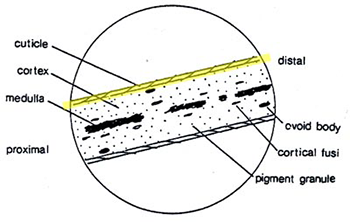
- Cortex
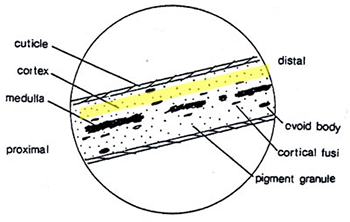
- Medulla
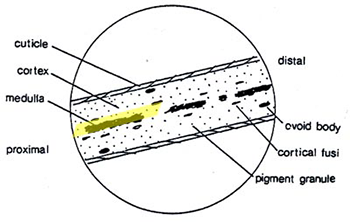
Images courtesy of the Federal Bureau of Investigation
Cuticle
The cuticle is a protective coating made of overlapping scales. These scales always point toward the tip of the hair. This is known as the distal (toward the tip) end, while the proximal (toward the root) end is the point from which the hair grows.
Examination of the cuticle allows investigators to know if the hair is human or not.
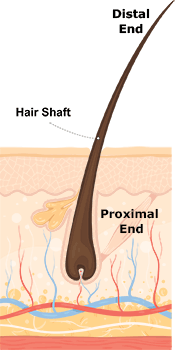
There are three possible scale patterns present on the cuticle:
Coronal: a crown-like scale pattern.
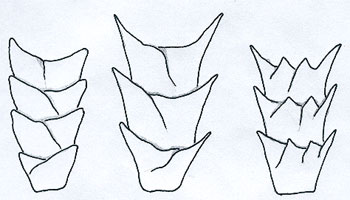
Examples:
- Small rodents

- Bats
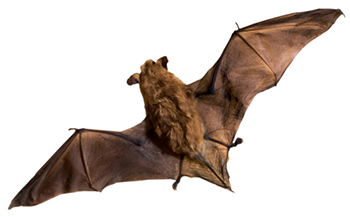
Spinous: spine-like scale pattern.
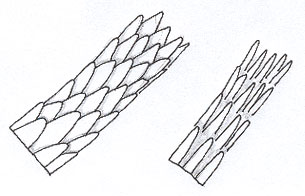
Examples:
- Cats

If you have ever gotten cat hair on your clothes, it is not easily removed. This is because of the spinous cuticle that holds onto your clothes.
Imbricate: flattened scale pattern
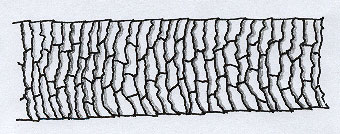
Examples:
- Most humans
- Many mammals, including deer, raccoon, and dogs
Check out Cuticle Patterns from the MicroLabNW Photomicrograph Gallery for examples of both the coronal and imbricate patterns and the FBI's Microscopy of Hair guide for pictures of spinous cuticles, among many others.
Knowledge Check #3
What type of cuticle pattern is present in this hair image?
- coronal
- spinous
- imbricate
Answer: b. spinous
Knowledge Check #4
Is the image shown above human or animal hair?
- Human
- Animal
Answer: b. Animal
Remember the examination of the cuticle of the hair allows forensic scientist to determine if the hair is human or animal. To observe the cuticle of hair, clear fingernail polish is placed on a microscope slide and then the hair is laid in the nail polish and left for about 45 seconds. The hair is then removed and an impression or cast of the hair cuticle can then be examined.
This image shows a scale mount, which enhances the pattern on the cuticle of human hair.
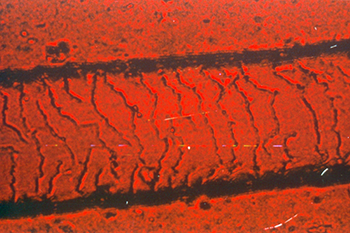
Cortex
The cortex gives hair its color and shape. There are three main features found in the cortex – melanin (the pigment that gives hair its color), cortical fusi (irregular shaped air spaces of varying size), and ovoid bodies (large solid structures that are round with regular margins).
Note the appearance of these three structures in the diagram below:
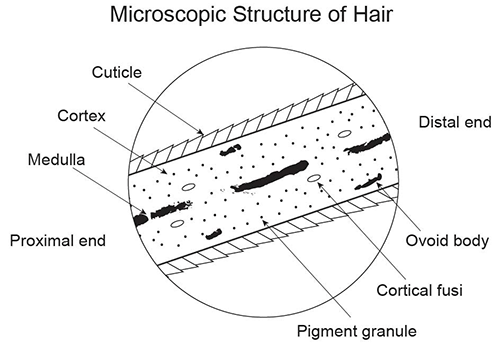
Pigment granules or melanin are small, dark, and solid structures that are granular in appearance and considerably smaller than cortical fusi. They vary in color, size, and distribution in a single hair. In humans, pigment granules are commonly distributed toward the cuticle, except in red-haired individuals.
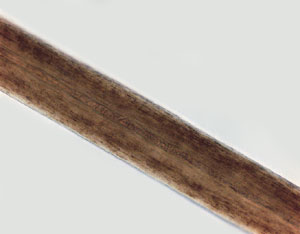

Cortical fusi are irregular-shaped airspaces of varying sizes. They are commonly found near the root of a mature human hair, although they may be present throughout the length of the hair.
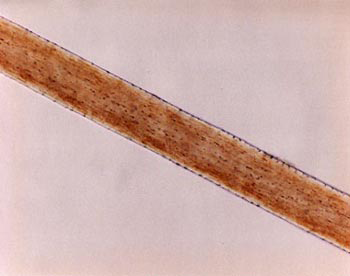
Ovoid bodies are large (larger than pigment granules), solid structures that are spherical to oval, with very regular margins. They are abundant in some cattle and dog hairs as well as in other animal hairs. To varying degrees, they are also found in human hairs.
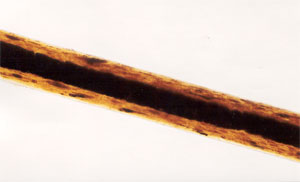


Knowledge Check #5
Identify the parts of the hair in the diagram.
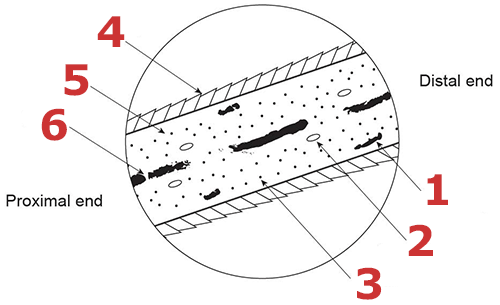
Terms:
- Cortex
- Cortical Fusi
- Cuticle
- Medulla
- Ovoid Body
- Pigment Granule
Answers:
- Ovoid Body
- Cortical Fusi
- Pigment Granule
- Cuticle
- Cortex
- Medulla
Medulla
The center of the hair, known as the medulla, is surrounded by the cortex. Not all hairs have a medulla, but when it is present in humans, it is one of three different types: fragmented, interrupted, or continuous.


Animal hair can have special types of medulla patterns not found in humans such as ladder or lattice. These distinct medulla patterns help to differentiate between human and animal hairs if there is question about the origin of the hair. It is important to note that medullae are only found in animal hair (including humans) and are never found in plant fibers!



Knowledge Check #6
The root of the hair is located at the ________blank end of the hair shaft.
Answer: proximal.
Root
The root can be used to:
- identify what stage of growth the hair was in
- determine if the hair is animal or human
- determine if the hair fell out or was forcibly removed
- determine DNA as it connects to the shaft under the skin
ACT
There are three different growth stages hair can be in at any given time, summarized with the acronym "ACT."
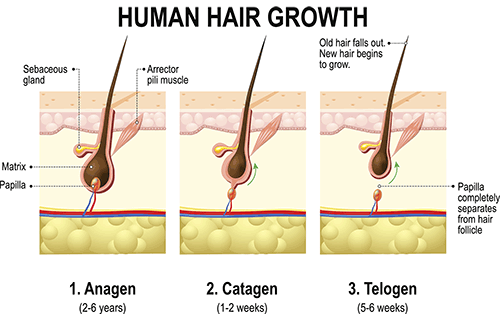
- A = Anagen Stage
- C = Catagen stage
- T = Telogen stage
Anagen Stage
- 80%-90% of hair is in this stage
- Most found at violent crime scenes where hair has been forcibly removed
- Hair is actively growing in this stage and can remain intact up to 5 years

Catagen stage
- Hair is not growing in this phase but is resting
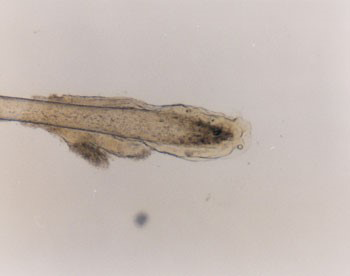
Telogen stage
- 8%-10% of hair is in this stage and can be found in hairbrushes or combs
- Hair in this stage is dying or ready to fall out and can remain intact two to six months

Knowledge Check #7
Match the following traits with one of the three stages of hair growth.
Traits:
- found in brushes
- 80-90% of hair
- 8-10% of hair
- found at crime scene
- second stage
- actively growing
- hair not growing
- dying/ready to fall out
- lasts 2-6 months
- can last 5 years
Stages:
- Anagen
- Catagen
- Telogen
Answers:
- Anagen Stage
- can last 5 years
- 80-90% of hair
- found at crime scene
- actively growing
- Catagen:
- hair not growing
- second stage
- Telogen:
- 8-10% of hair
- found in brushes
- dying/ready to fall out
- lasts 2-6 months
Animal or human?
The root of human hairs is commonly club-shaped, whereas the roots of animal hairs are highly variable.
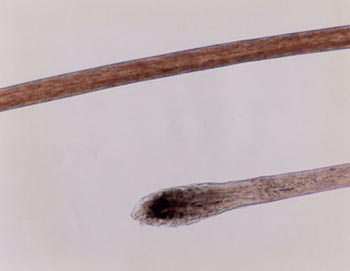
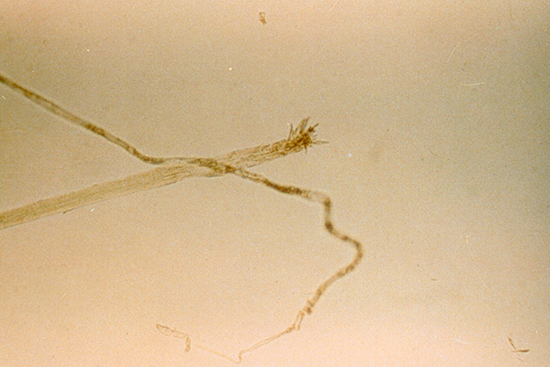
Forcibly removed?
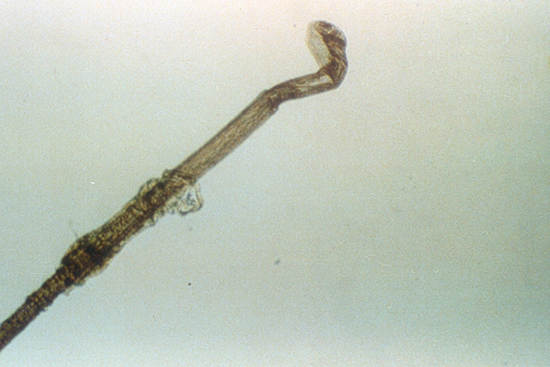
DNA
The root can also be very important in solving a case because it may contain DNA. For possible DNA to be collected, the hair must contain the hair follicle (root)/follicular tag. The picture below shows the follicular tag (highlighted in yellow) that may contain a DNA sample.

Credits
"Identification and Comparison of Hair" from the Forensic Science course by Georgia Virtual Learning (OER) is licensed under CC BY 3.0.